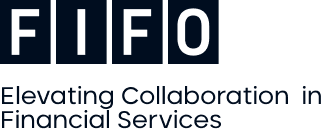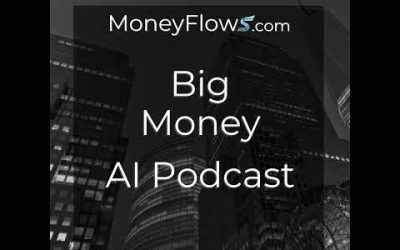by Louis Navellier
May 7, 2024
Last Wednesday, May 1, the Federal Open Market Committee’s (FOMC) statement confirmed a “lack of further progress” on bringing down inflation as their primary reason for standing pat on interest rates.
However, in its best “double speak,” the FOMC statement said that their goal of achieving their dual mandate of high employment and low inflation “have moved toward better balance over the past year.” Furthermore, the Fed also said that it will slow its pace of quantitative tightening, which caused Treasury bond yields to decline after the statement. Overall, the financial markets liked the FOMC statement.
The stock market surged after Fed Chair Jerome Powell said in his press conference that a Fed rate hike was “unlikely.” The Fed Chairman also said that financial conditions were tighter now than then they were back in December, and that the U.S. economy was “not re-accelerating.” Finally, Powell said that the Fed’s policy was “restrictive.” In total, Jerome Powell made it clear that the Fed would likely ease rather than tighten further, so bond yields continued to decline, and the stock market staged a big reversal.
Meanwhile, the initial economic reports for April indicated slower growth, which implies that the Fed might be able to cut rates sooner than expected, perhaps in July. First, the Conference Board on Tuesday announced that its consumer confidence index plunged to 97 in April, down from a revised 103.1 in March. This is the third straight monthly decline, pushing the consumer confidence index to its lowest level since July 2022. Dana Peterson, chief economist at the Conference Board, said consumer concerns were “dominated” by elevated prices for food and gas. Obviously, this is bad news for President Biden’s reelection chances, which is why his numbers hit an all-time low in a CNN poll that included RFK, Jr.
The next piece of bad news was that the Institute of Supply Management (ISM) reported on Wednesday that its manufacturing index slipped back into a contraction mode by dropping to 49.2 in April, down from 50.3 in March. Any reading below 50 signals a contraction. The new orders component dropped to 49.1 in April, down from 51.4 in March, and the new exports orders component slipped to 48.4 in April (from 51.6 in March). Barely half (9 of 16) industries that ISM surveyed reported growth in April.
An even bigger surprise came on Friday, when ISM announced that its non-manufacturing (service) index plunged to 49.4 in April, down from 51.4 in March. This may signal that the 15-month expansion in the service sector has abruptly halted. However, there were some green shoots in the ISM components, since new orders, supplier deliveries, inventory sentiment and the backlog of orders all rose in April. ISM’s Anthony Nieves said, “The decline in the composite index in April is a result of lower business activity, slower new orders growth, faster supplier deliveries and the continued contraction in employment. The majority of respondents indicate that inflation and geopolitical issues remain concerns.” With both the ISM manufacturing and service indices signaling contraction, the Fed might cut interest rates by July!
Perhaps the most disappointing economic news came on Friday, when the Labor Department reported that only 175,000 net payroll jobs were created in April, substantially below the economists’ consensus estimate of 240,000. Also, the unemployment rate rose to 3.9% in April, up from 3.8% in March. Perhaps the biggest surprise was that average hourly earnings rose only 0.2% (7 cents) in April, to $34.75 per hour, and 3.9% in the past 12 months. The average workweek declined to 34.3 hours in April, down from 34.4 hours in March. Treasury yields declined immediately after this report, on hopes of an earlier Fed rate cut.
One reason for the slower job growth is the higher cost of employment – above and beyond wages alone. The Labor Department reported on Tuesday that its employment cost index rose 1.2% in the first quarter, up from +0.9% in the fourth quarter. This is the largest increase in the employment cost index in a year, raising fears that inflation may not hit the Fed’s 2% target this year. The Labor Department also reported that in the past 12 months, through March, union wages rose 6.3%, while non-union wages rose 4.1%.
Speaking of wage inflation, unit labor costs rose 4.7% in the past year, through March 31, according to the Labor Department. (All of these figures are higher than the official 3.9% annual wage rate growth in last Friday’s payroll report.) One of the catalysts behind wage inflation is the fact that productivity only rose by 0.3% annually in the first quarter, down sharply from a 3.5% annual pace in the fourth quarter.
Speaking of rising inflation, The Wall Street Journal reported that AMH and Invitation Homes have bought a high proportion of single-family homes in order to rent them. Texas Governor Greg Abbott said on X (Twitter) that the “corporate large-scale buying of residential homes seems to be distorting the market and making it harder for the average Texan to purchase a home.” The Journal reported that in Atlanta, nearly 11% of all rental homes in the five-county area are now owned by just three real-estate companies, according to a recent study by researchers at Georgia State University. Since private equity has fueled the corporate home buying spree, one source of higher shelter costs is apparently Wall Street.
Is East Asia Starting to Recover?
First-quarter GDP reports are starting to come in from all over Asia. China has reported 5.3% annualized growth, but I told you last week why I don’t trust that number. I trust more the free market reporting coming from South Korea (+3.2%), Malaysia (+3.9%) and Singapore (+2.7%) for first-quarter growth.
As for the second quarter, South Korea’s exports surged 13.8% in April to $56.26 billion, following a 3.1% rise in March. This was the seventh consecutive month that South Korea’s exports have risen due to strong demand for semiconductors, flat screens, smartphones, and vehicles. Specifically, semiconductor exports surged 56% in the past year, while shipments of flat screens rose 16%, smartphones rose 11% and vehicles rose 10%. South Korean imports also rose 5.4% to $54.73 billion, a good sign for its economy.
As for China’s other, more reliable economic statistics, I should add that China’s official purchasing managers index (PMI) rose to 50.4 in April. This was the second straight month that the PMI was above 50 and signaled an expansion. New export orders are the primary reason that China’s PMI is rising.
As for China, two recent visits by Americans tell the story of how to deal with China – one political, the other business. First, Secretary of State Anthony Blinken went to China in an official state visit where he intended to deliver an ultimatum over aiding Russia in the war in Ukraine. China has been supplying Russia’s military industry with semiconductors, sophisticated machine tools and cruise missile engines.
Secretary of State Blinken likely told China that they risk new sanctions and additional trade barriers if they continue to supply Russia’s military. China does not like to be told what to do, so Beijing warned the Biden Administration that it must choose between “confrontation or co-operation.” Shanghai Communist Party boss Chen Jining said, “Whether China and the U.S. chose co-operation or confrontation, it affects the wellbeing of both peoples, of nations and also the future of humanity.” Wow! Take that, Mr. Blinken!
In contrast, Tesla CEO Elon Musk visited China and received in-principal approval from the Chinese government for Tesla’s driver assist system, but Tesla would only be granted approval if they managed to clear two important hurdles, namely (1) reaching a mapping and navigation deal with Chinese tech giant Baidu and (2) meeting requirements for how it handles data-security and privacy issues.
Europe also resumed growing in the first quarter (the EU GDP rose 0.3% in the first quarter), so growing global demand appears to be the primary catalyst behind China’s improving manufacturing sector.
Six Months Until Election Day – So Candidates Promise Voters “Everything”
With just six months until election-day, we know that change is coming soon, and despite all the raging controversies over both major candidates, optimism generally rises during Presidential election years as the leading candidates promise everything and anything. Specifically, President Biden is promising all kinds of new benefits – and the Republicans aren’t doing much to limit rising deficit spending, either.
In late April, we survived a big Treasury refinancing as Treasury yields rose. After the Fed Chair’s soothing words last Wednesday, Treasury rates temporarily retreated, but the fear is that there will be a day of reckoning when the Treasury Department auctions offer more debt than the markets wish to buy. However, since the U.S. dollar is strong and Europe is expected to cut key interest rates in June, before the Fed’s first rate cut, I expect that there will be plenty of international buying pressure for U.S. Treasuries, so a day of reckoning will likely be postponed through the summer nominating conventions.
Until then, the plunge in consumer confidence and the anti-Israel/pro-Palestine protests on college campuses bode poorly for Biden’s re-election chances. These protests are clearly being orchestrated to embarrass Biden with “genocide Joe” posters. As these protests escalate, the odds of Joe Biden being replaced by another candidate through the power of the Super Delegates at the Democratic National Convention (DNC) in August are rising. In fact, these protests could converge at the DNC in Chicago to disrupt Biden’s nomination. If the Super Delegates force Joe Biden to step aside, California Governor Gavin Newsom would be the most likely candidate that the Super Delegates may nominate in his stead.
That would make for an interesting (and entertaining) final 10 weeks of campaigning this fall.
Navellier & Associates, a few accounts own Tesla (TSLA), per client request in managed accounts. Louis Navellier does not own Tesla (TSLA) personally.
The post 5-7-24: Powell’s Performance Boosts the Market Amid Downbeat Economic Reports appeared first on Navellier.






